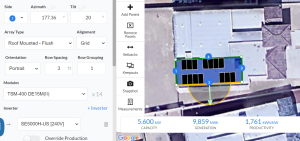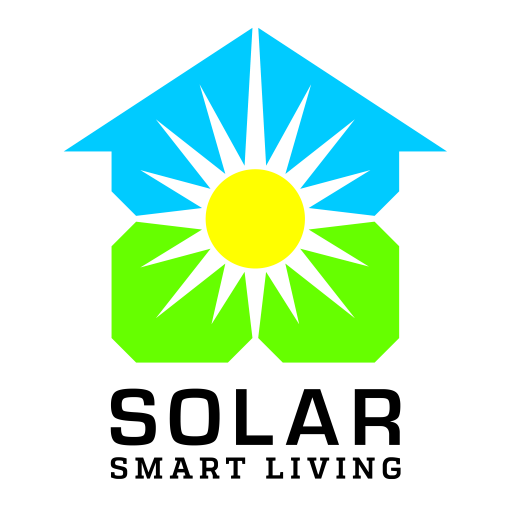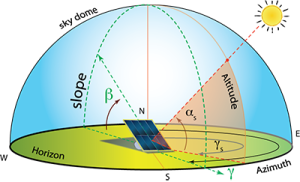Why is the orientation of panels so important?
The amount of sunshine a panel receives depends on a number of factors. Panels facing due south receive the most sunshine since the sun is hitting them all day long. Panels facing due east will receive morning sun, but by the mid-afternoon the panels are on the shady side of the house. Conversely, panels facing due west don’t start receiving sunshine until the sun has passed over the mid-morning spot and the sun starts hitting them.
Below we can see an example of a 5.6 KW system, with the panels at a 20 degree pitch. They will produce 8,684 kWh annually if the panels face due west. The same 5.6 KW system facing due east will produce 8,809 kWh over the course of a year. If the panels are facing due south, then our 5.6 KW system will produce 10,116 kWh – about 16% more per year than the west facing panels!
(Click on the images to enlarge them.)
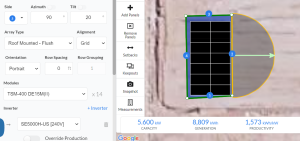
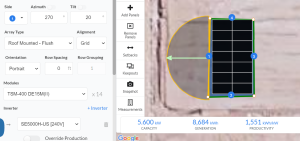
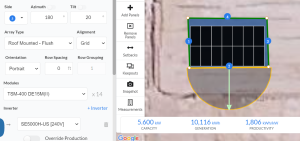
In addition to the azimuth, another production variable is a panel’s tilt (sometimes called pitch). Notice that the east facing system at a 10-degree pitch produces 156 more kWh annually (8,965 vs 8,809) than a system on a roof with a 20-degree tilt. The west facing system with a 10 degree tilt gives us 8,898 kWh, 214 kWh more each year than the west facing system that produces 8,684 kWh. Look at what happens with the south facing panels when the tilt is changed from 20 degrees to 10 degrees. Unlike east and west facing panels that get more annual production at 10 than 20, south facing panels produce 444 fewer kWh at 10 degrees than they do at 20 degrees, 9,672 vs 10,116. Most of this has to do with angle of the sun at each azimuth and pitch angle to the panels during the course of the year.
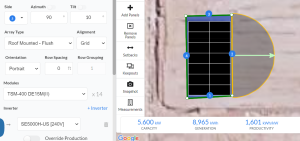
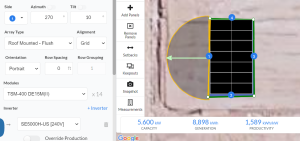
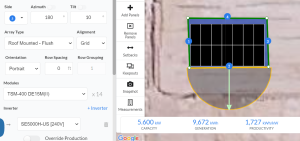
Azimuth is more important than pitch and tilt, but both variables come into play when designing a solar system. We don’t have any control over a home’s orientation or over what their roof’s pitch but we can be effective in how we design the system by using the orientation most ideal for their home.
Working with Flat Roof Designs
When Designing for Solar on a Flat Roof, the principles of pitch and azimuth still apply. There are a few differences however.
When placing panels on a flat roof, you have to include a 3 foot setback along each parapet wall. You also want to avoid placing panels over vents and other obstructions. You will also space your rows about 3 feet apart.
East and West Facing Panels
When a mounting plane requires you to place panels in an east or west direction, your best pitch will be at 10 degrees. The production performance is better at a lower pitch when facing the panels in these azimuths.
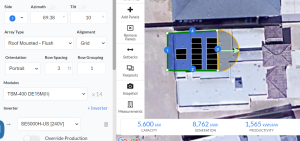
South Facing Panels
The best azimuth for any solar array is south but when you are placing your panels on a flat roof your best pitch will be at 20 degrees. The production performance is ideal at this pitch compared with others.
